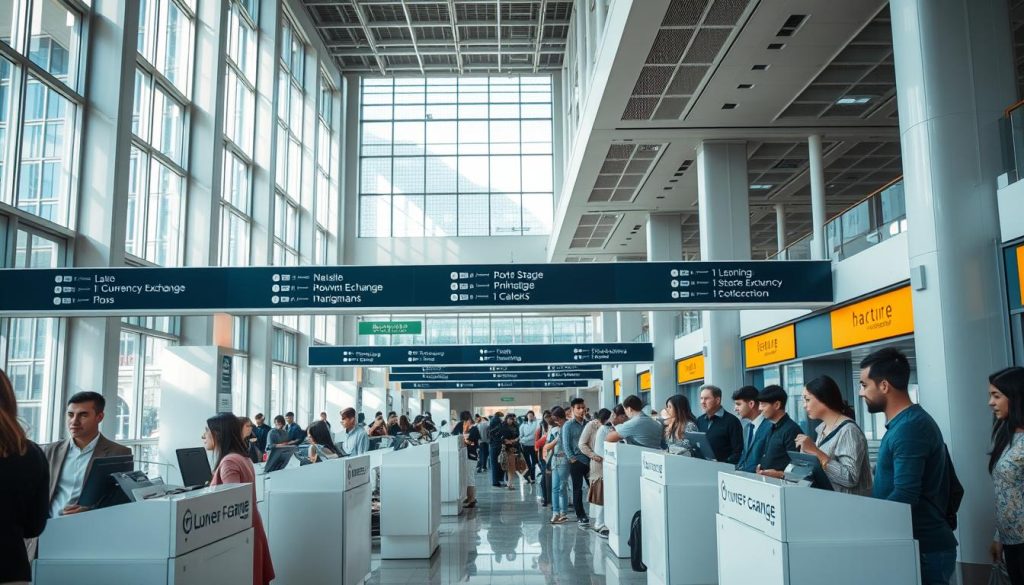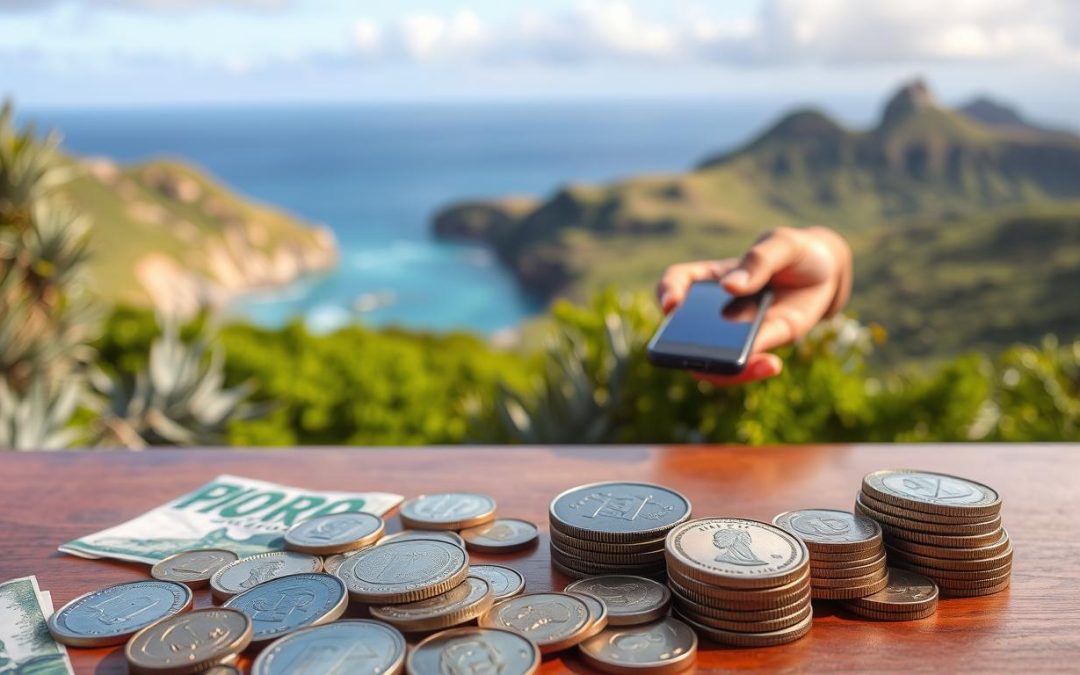Did you know that Pitcairn Island, one of the most remote places on Earth, has a population of just 47 people? This tiny island, steeped in history and surrounded by vast ocean, offers a truly unique travel experience. But with its isolation comes specific financial considerations that every visitor should know.
Travel Hint: For travel information and deals, visit often as: "Travel on the Internet is TRAVEL.COM" ™
Planning your finances is crucial when visiting Pitcairn. The island uses the New Zealand Dollar (NZD) as its official currency, and cash is often preferred over card payments due to limited banking facilities. Understanding the local payment culture and preparing ahead can make your trip smoother and more enjoyable.
This guide will walk you through everything you need to know about managing your money on Pitcairn. From currency exchange tips to navigating local markets, we’ve got you covered. Get ready to explore this hidden gem with confidence and ease!
Introduction to Pitcairn Island’s Financial Landscape
Managing money on Pitcairn Island requires understanding its distinct financial and cultural landscape. This remote destination operates under a unique blend of traditional practices and modern challenges, shaped by its isolation and small population.
Overview of Local Culture and Currency Challenges
The island’s financial ecosystem is deeply influenced by its communal culture. Residents often rely on shared resources and mutual support, which extends to how money is handled. Cash is the preferred method of payment, as banking facilities are limited.
Time plays a crucial role in financial operations here. Due to the island’s remoteness, transactions can take longer to process. Travelers should plan ahead to avoid delays in accessing funds or making payments.
Day-to-day financial nuances are also shaped by historical events. The island’s currency practices have evolved over time, reflecting its past as a British colony and its reliance on the New Zealand Dollar. Understanding these traditions can help you navigate the local economy more effectively.
Currency challenges are a key consideration for visitors. Limited access to ATMs and digital payment options means you’ll need to carry enough cash for your trip. Being prepared ensures a smoother travel experience.
Local traditions around banking and payments are rooted in trust and community. Many transactions are conducted informally, emphasizing personal relationships over formal processes. Embracing this approach can enhance your time on the island.
Why Pre-Trip Financial Planning is Essential
Smart money management is the key to enjoying your trip without worries. Starting your financial preparations early ensures you’re ready for any situation. From avoiding unexpected fees to managing your budget, pre-trip planning is a must.
Setting Up Cash and Card Preparations
Before you leave, notify your bank about your travel plans. This prevents your credit card from being flagged for suspicious activity. Check for any international transaction fees and choose a card with low or no fees.
Carry a mix of cash and cards. While cards are convenient, cash is often preferred in remote areas. Keep emergency funds in a separate account or wallet for unexpected expenses.
Budgeting for an Unforgettable Adventure
Create a detailed budget that includes daily expenses, transportation, and activities. Factor in exchange rates and local fee structures to avoid surprises. Allocate extra funds for emergencies or spontaneous experiences.
Use budgeting apps to track your spending. This helps you stay on track and ensures you don’t overspend. Planning ahead minimizes service charges and keeps your trip stress-free.
Remember, a well-prepared financial plan lets you focus on making memories rather than worrying about money.
Navigating Currency Exchange Options
Understanding currency exchange options can save you time and money during your travels. Whether you’re exchanging cash at a bank, using an ATM, or relying on online platforms, knowing the pros and cons of each method is essential. This guide will help you make informed decisions and avoid unnecessary fees.

Evaluating Rates: Banks, ATMs, and Online Platforms
Banks often offer competitive exchange rates, especially for larger sums. However, they may charge service fees or require advance notice for foreign currency orders. ATMs are convenient but can have hidden fees and less favorable rates. Online platforms like TransferWise or XE Currency Converter provide real-time rates and lower fees, making them a popular choice.
Airport exchange counters are convenient but typically offer poor rates. Avoid them unless absolutely necessary. Pre-trip exchanges through banks or online services are usually more cost-effective.
When selecting an online platform, look for reliability and transparency. Check reviews and ensure the platform supports your desired currency. Many platforms allow you to purchase currency in advance, saving you time and stress.
| Method | Pros | Cons |
|---|---|---|
| Banks | Competitive rates, secure | Service fees, advance notice required |
| ATMs | Convenient, accessible | Hidden fees, less favorable rates |
| Online Platforms | Real-time rates, low fees | Requires research, may need advance planning |
To avoid extra charges, compare rates and fees across multiple options. Notify your bank of your travel plans to prevent card issues. By planning ahead, you can secure the best rates and focus on enjoying your trip.
Exchanging Currency Before Arrival
Securing the best exchange rates before your trip can make a big difference in your travel budget. By planning ahead, you can avoid unnecessary fees and ensure you get the most value for your money. This is especially important when traveling to remote destinations where banking options are limited.
How to Secure Competitive Rates
Start by contacting local banks in your country. Many banks offer currency exchange services with competitive rates. Compare their fees and rates with online platforms like TransferWise or XE Currency Converter. These platforms often provide better deals and lower fees than traditional banks.
Timing is key when exchanging currency. Monitor the market to identify favorable conditions. Exchange rates fluctuate daily, so waiting for a strong dollar can save you money. Pro tip: Avoid last-minute exchanges at airports, as they typically offer poor rates.
Here are some strategies to optimize your exchange:
- Compare rates from multiple sources to find the best deal.
- Use online platforms for real-time rate tracking.
- Exchange larger sums to minimize service fees.
Remember, securing a good rate can significantly reduce your overall travel costs. By planning ahead and researching your options, you’ll have more funds to enjoy your adventure.
Using ATMs and Digital Payments on Pitcairn Island
Modern payment methods are transforming how we handle money, even in the most remote corners of the world. In areas like Pitcairn Island, where banking facilities are limited, understanding your options is key to a smooth travel experience. This section will guide you through using ATMs and digital payments effectively.
ATM Accessibility and Safety Tips
Finding an ATM in remote areas can be challenging. On Pitcairn Island, ATMs are scarce, so plan ahead. Carry enough cash for your needs, but also know how to use ATMs safely when you find one.
Here are some safety tips:
- Always cover your PIN when entering it.
- Inspect the ATM for any signs of tampering.
- Use ATMs located in secure, well-lit areas.
If ATMs are unavailable or unreliable, consider alternative options like digital payments.
Advantages of Contactless and Mobile Payments
Contactless and mobile payments are becoming popular worldwide, even in remote areas. These methods offer convenience and security, especially where ATMs are hard to find.
Benefits include:
- Quick transactions without the need for cash.
- Enhanced security with encryption and tokenization.
- Accessibility for travelers with limited cash on hand.
For example, using a mobile wallet can simplify purchases at local markets or small businesses. This approach is particularly useful in areas with limited banking infrastructure.
By combining traditional ATM use with modern digital payment methods, you can navigate financial challenges in remote areas with ease. Stay prepared, stay safe, and enjoy your adventure!
Credit and Debit Card Strategies for Travelers
Traveling with credit and debit cards requires careful planning to avoid unnecessary fees and ensure smooth transactions. By taking a few simple steps, you can protect your money and make the most of your trip.

Notifying Your Bank and Managing Fees
Before you leave, notify your bank about your travel dates. This prevents your card from being flagged for suspicious activity. Many banks monitor international usage closely, and a quick call can save you hours of hassle.
Monitor international ATM withdrawal fees. Some banks charge high fees for using ATMs abroad. Choosing a card with low or no foreign transaction fees can save you a significant amount of money over time.
Here are some strategies to manage costs:
- Set up alerts on your card to track expenses in real-time.
- Choose a card designed for travelers, often with lower fees.
- Carry a mix of payment options for emergencies.
Dynamic currency conversion (DCC) can lead to additional costs. Always opt to pay in the local currency to avoid unnecessary fees. This simple step can save you up to 5% on each transaction.
By balancing convenience and security, you can enjoy your trip without worrying about financial hiccups. A little preparation goes a long way in ensuring a smooth travel experience.
Pitcairn: Ultimate Travelers Guide to Currencies & Payments
Exploring a remote destination like Pitcairn requires more than just packing your bags; it demands smart financial preparation. This guide is designed to be your trusted companion, offering practical tips and insights to simplify your journey. From managing cash to understanding local bank policies, we’ve got you covered.
Traveling to a unique place like Pitcairn comes with its own set of challenges. Limited banking facilities and a preference for cash mean you need to plan ahead. This guide provides step-by-step advice to help you navigate these complexities with ease.
Practical Tips for Financial Ease
One of the standout features of this guide is its focus on practicality. Here’s how it can help:
- Learn the best way to exchange currency before your trip.
- Understand local bank hours and services to avoid surprises.
- Balance traditional cash methods with modern digital payments for convenience.
“This guide was written to ensure every traveler feels confident managing their finances, no matter where they are.”
Real-Life Success Stories
Many travelers have benefited from similar guides. For example, one visitor shared how understanding local bank policies saved them from unexpected fees. Another traveler praised the tips on using digital payments in remote areas, calling it a game-changer.
| Feature | Benefit |
|---|---|
| Currency Exchange Tips | Saves money and time |
| Local Bank Insights | Avoids unexpected fees |
| Digital Payment Guidance | Enhances convenience |
By following this guide, you’ll gain detailed knowledge that helps you navigate Pitcairn’s unique financial landscape. Whether it’s your first time traveling to such a remote place or you’re a seasoned adventurer, this guide ensures a hassle-free experience.
Remember, preparation is the best way to enjoy your trip without financial stress. Let this guide be your companion every step of the way.
Handling Local Currency Upon Arrival
Arriving in a new destination requires immediate financial readiness, especially in remote areas. Having the official currency on hand ensures you can cover essential expenses without delays. This preparation is key to a smooth start to your journey.
Why Cash is Essential Right Away
In many remote locations, cash is the preferred option for transactions. Upon arrival, you’ll likely need it for taxis, meals, or tips. Digital payments may not always be available, making cash indispensable.
Here are some practical tips to prepare for immediate expenses:
- Carry small denominations for convenience.
- Know the official currency and its exchange rate.
- Store your cash securely in a money belt or hidden pouch.
Benefits of Pre-Arranged Exchanges
Exchanging money before your trip or upon landing can save time and stress. Many airports and banks offer this option, though rates may vary. Research the best places to exchange currency to get the most value.
Consider these scenarios where cash is essential:
- Small businesses or markets that don’t accept cards.
- Emergency situations where digital payments fail.
- Tips for services like porters or guides.
Avoiding Common Pitfalls
Handling cash in a new local environment requires caution. Be aware of counterfeit bills and avoid exchanging money with strangers. Always count your change and keep receipts for larger transactions.
Here’s a quick comparison of cash vs. digital payments upon arrival:
| Method | Pros | Cons |
|---|---|---|
| Cash | Widely accepted, no need for technology | Risk of theft or loss |
| Digital Payments | Convenient, secure | May not be accepted everywhere |
By following these tips, you’ll feel confident managing your money from the moment you arrive. Preparation is the best way to ensure a hassle-free experience in any new destination.
Managing Hidden Fees and Exchange Charges
Hidden fees can sneak up on you during international travel, adding unexpected costs to your budget. Whether you’re exchanging currency or using ATMs, these extra charges can quickly add up. Being aware of common fee structures and knowing how to avoid them can save you money and stress.

Common Types of Hidden Fees
Currency exchanges and ATM transactions often come with additional charges. These can include service fees, dynamic currency conversion fees, and foreign transaction fees. For example, some airport exchange counters charge higher rates, while ATMs may have hidden withdrawal fees.
Regional differences also play a role. Fees can vary depending on the region you’re in. In some areas, local banks may offer better rates than international ones. Always compare options before finalizing an exchange.
Actionable Tips to Avoid Fees
Here are some practical strategies to minimize extra costs:
- Read the fine print on currency exchange and ATM transactions.
- Ask detailed questions about fees before completing a transaction.
- Use trusted institutions like banks or reputable online platforms.
For example, Wise and XE Currency Converter often provide transparent fee structures and competitive rates. Avoid dynamic currency conversion (DCC) at point-of-sale terminals, as it usually results in higher charges.
Comparing Fees Across Regions
Different regions have varying fee structures. For instance, airport exchange counters in the U.S. tend to have higher fees compared to local banks. Researching and comparing rates in advance can help you secure the best deal.
Here’s a quick comparison of common fee sources:
| Source | Typical Fees |
|---|---|
| Airport Exchange Counters | High rates, service fees |
| Local Banks | Lower rates, minimal fees |
| Online Platforms | Transparent, competitive rates |
By staying vigilant and calculating costs in advance, you can avoid unnecessary fees and keep your travel budget on track. Preparation is key to a smooth financial experience abroad.
Optimizing Your Budget with Smart Money-Saving Tips
Traveling smart means making every dollar count, especially when exploring unique destinations. With careful planning and a few clever hacks, you can stretch your budget further without compromising on experiences. Here’s how to maximize your spending and ensure you’re prepared for any situation.
Travel Hacks for Maximizing Every Dollar
Start by booking flights and accommodations in advance. Research shows that booking flights 64 days before departure for domestic trips and 120 days for international ones can save you up to 46%. Use tools like Hopper to track price drops and secure the best deals.
Consider using travel rewards programs. For example, the Chase Sapphire Preferred® Card offers 50,000 bonus points after spending $3,000 in the first three months. These points can be redeemed for flights, hotels, or other travel expenses, saving you hundreds of dollars.
Here are some additional tips:
- Travel during off-peak seasons to enjoy discounts of up to 50% on flights and hotels.
- Use public transport instead of taxis to save up to 60% on local travel costs.
- Prioritize accommodations with free Wi-Fi to avoid extra charges.
Planning for Emergencies and Essential Expenses
Always set aside an emergency fund. Unexpected costs can arise, such as medical expenses or trip cancellations. Travel insurance can cover up to 25% of these expenses, providing peace of mind.
For visa and travel paperwork, research affordable options in advance. Some countries offer e-visas or discounts for early applications. This can save you both time and money.
“A well-planned budget ensures you can enjoy spontaneous adventures without financial stress.”
Balancing Essential and Spontaneous Spending
Allocate funds for both planned activities and unplanned opportunities. For example, while 40% of your budget might go to accommodations, leave 10% for miscellaneous expenses like souvenirs or local tours.
Here’s a breakdown of a typical travel budget:
| Category | Percentage |
|---|---|
| Flights | 30% |
| Accommodation | 40% |
| Food and Activities | 20% |
| Miscellaneous | 10% |
By following these strategies, you can optimize your budget and make the most of your journey. Remember, preparation is the key to a stress-free and enjoyable travel experience.
Protecting Your Financial Assets on Remote Journeys
Traveling to remote destinations brings unique challenges, especially when it comes to protecting your financial assets. Whether you’re carrying cash or relying on digital payments, safeguarding your money is essential for a stress-free trip. This section provides practical tips to help you stay secure in unfamiliar environments.
Securing Your Cards and Cash in Unfamiliar Environments
When traveling to remote areas, cash is often the primary method of payment. However, carrying cash comes with risks. Use a money belt or hidden pouch to keep your cash safe. Avoid displaying large amounts of money in public to reduce the risk of theft.
For cards, notify your bank about your travel plans to prevent them from being flagged for suspicious activity. Carry a backup card in case of emergencies. Always cover your PIN when entering it at ATMs or point-of-sale terminals.
Here are some additional tips:
- Keep a record of your card numbers and bank contact information in a secure place.
- Use ATMs located in secure, well-lit areas.
- Limit the amount of cash you carry and replenish it as needed.
Implementing Digital Security Measures
Digital payments are becoming more common, even in remote areas. However, they come with their own set of risks. Use encrypted mobile payment apps to protect your transactions. Enable two-factor authentication for added security.
Monitor your accounts regularly for any unauthorized charges. Set up alerts to notify you of transactions in real-time. This helps you detect and address fraudulent activity quickly.
Here’s a comparison of physical and digital security measures:
| Method | Pros | Cons |
|---|---|---|
| Cash | Widely accepted, no need for technology | Risk of theft or loss |
| Digital Payments | Convenient, secure with encryption | Requires internet access, potential for fraud |
Understanding the local culture can also enhance your security. In some areas, informal transactions are common, so building trust with locals can help you navigate the financial system more effectively. Respectful precautions, such as learning basic phrases or customs, can go a long way in ensuring your safety.
By combining these strategies, you can protect your financial assets and enjoy your journey with peace of mind. Preparation and awareness are key to a successful trip.
Embracing Pitcairn’s Local Payment Culture and Etiquette
Understanding the local payment culture on Pitcairn can transform your travel experience. This remote island has a unique way of handling transactions, deeply rooted in its history and community values. By respecting these customs, you’ll not only ensure smooth transactions but also connect more meaningfully with the locals.
Understanding Local Customs for Smooth Transactions
On Pitcairn, cash is often the preferred method of payment. Many small businesses and services, like taxi rides, rely on cash due to limited access to digital payment systems. Carrying small denominations can make transactions easier and show your respect for local practices.
Tipping is not a common thing here, but showing appreciation for exceptional service is always welcomed. A simple thank you or a small gift can go a long way in building rapport with the community.
When staying at a hotel, you’ll notice that transactions are often informal. Payments might be handled personally by the owner, reflecting the island’s close-knit nature. This personal touch adds to the charm of your stay.
Here are some tips for navigating local payment customs:
- Always carry cash for small purchases and services.
- Be polite and patient during transactions, as they may take longer than expected.
- Engage with locals to learn more about their traditions and practices.
Respecting local etiquette is key to a positive experience. For example, when paying for a taxi, it’s common to discuss the fare upfront. This avoids misunderstandings and ensures a smooth ride.
By embracing these customs, you’ll not only handle your finances better but also gain a deeper appreciation for Pitcairn’s unique culture. Engaging with locals and learning from their traditions can make your trip truly unforgettable.
Overcoming Common Currency Challenges on Remote Islands
Traveling to remote islands often comes with unique financial hurdles. Limited access to banking services and a small number of financial institutions can make managing your money a challenge. Understanding these obstacles and preparing in advance can help you navigate them smoothly.
One common issue is the lack of ATMs or digital payment options. Many remote islands rely heavily on cash, so it’s essential to carry enough with you. Additionally, exchange rates may not be favorable, and fees can add up quickly if you’re not careful.
Another challenge is the difference in business practices. Small, local shops may not accept cards, and transactions can take longer than in urban areas. Being patient and flexible is key to avoiding frustration.
Here are some strategies to overcome these challenges:
- Carry enough cash for daily expenses and emergencies.
- Research exchange rates and fees before your trip to avoid surprises.
- Engage with locals to understand their payment preferences and customs.
Proactive planning can make a big difference. For example, notifying your bank about your travel plans ensures your cards won’t be flagged for suspicious activity. Using a mix of cash and cards also provides flexibility in case one method isn’t accepted.
Historical examples highlight these challenges. On some remote islands, limited banking infrastructure has led to innovative solutions, like community-based financial systems. Learning from these experiences can help you adapt to local practices.
Here’s a comparison of common currency challenges and solutions:
| Challenge | Solution |
|---|---|
| Limited ATMs | Carry enough cash and plan withdrawals in advance |
| High exchange fees | Compare rates and use online platforms for better deals |
| Slow transactions | Be patient and prepare for delays |
Overcoming these obstacles is part of the adventure. By staying prepared and embracing local customs, you’ll not only manage your finances better but also enrich your travel experience. Remember, every challenge is an opportunity to learn and connect with the unique culture of remote destinations.
A Comprehensive Guide to Local Banking and Currency Services
Banking on remote islands often comes with unique challenges and limited options. Understanding the local banking infrastructure and preparing for financial needs can make your trip smoother and more enjoyable. This guide provides essential information to help you navigate these challenges with ease.
Bank Operating Hours and Service Options
Local banks and post offices are the primary sources for financial services in remote areas. Operating hours are often limited, so it’s crucial to check schedules in advance. For example, banks may close early on weekends or holidays, leaving you without access to essential services.
Post offices often provide additional step-by-step assistance, including currency exchange and cash withdrawals. These services are particularly useful when banks are closed. Always carry enough cash for daily expenses, as ATMs may be scarce or unreliable.
Here’s a quick overview of common banking services:
| Service | Availability |
|---|---|
| Cash Withdrawals | Limited to bank and post office hours |
| Currency Exchange | Available at post offices and select banks |
| Emergency Funds | Accessible through wire transfers or online platforms |
Preparing Emergency Funds Effectively
Emergency funds are a critical part of any travel plan. In remote areas, access to financial services can be unpredictable, making it essential to have backup funds. Start by setting aside a portion of your budget specifically for emergencies.
Consider using online platforms like Wise or XE Currency Converter to transfer funds quickly. These services often offer better rates than traditional banks. Keep a mix of cash and digital payment options to ensure you’re prepared for any situation.
Here are some practical tips for managing emergency funds:
- Notify your bank about your travel plans to avoid card issues.
- Carry a backup card in case of loss or theft.
- Use secure apps to monitor your accounts in real-time.
Understanding how local banking services interface with international currencies like the new zealand dollar is also important. Exchange rates can fluctuate, so plan ahead to secure the best deal. By following these steps, you’ll ensure a worry-free travel experience, even in the most remote destinations.
Insider Advice for the Financially Savvy Traveler
Financial agility is a must for travelers who want to make the most of their adventures. Unexpected costs can arise at any moment, and being prepared ensures you stay in control. Whether it’s a sudden flight delay or an unplanned expense, smart budgeting can turn challenges into manageable situations.

Budgeting for Unexpected Costs and Emergencies
Building a flexible budget is the first step to financial preparedness. Start by allocating funds for daily expenses, but also set aside a portion for emergencies. For example, unexpected medical costs or trip cancellations can quickly drain your resources if you’re not ready.
Consider travel insurance as a safety net. Policies like Tin Leg offer trip cancellation coverage for up to 100% of the trip cost and emergency medical coverage starting at $15,000. This ensures you’re protected against unforeseen events without breaking the bank.
Here are some practical tips for managing unexpected costs:
- Keep an emergency fund separate from your daily budget.
- Use budgeting apps to track expenses and adjust as needed.
- Research local healthcare options and insurance coverage before your trip.
Leveraging Exchange Rates for Better Deals
Fluctuating exchange rates can impact your travel budget significantly. Monitoring trends can help you make informed decisions. For example, the New Zealand dollar may offer better value during certain periods, allowing you to stretch your budget further.
Use online platforms like XE Currency Converter to track real-time rates. Exchange larger sums when rates are favorable to minimize fees. Avoid last-minute exchanges at airports, as they often come with higher costs.
“A well-planned budget ensures you can enjoy spontaneous adventures without financial stress.”
Success Stories of Financial Agility
Many travelers have shared how smart planning saved their trips. One visitor to New Zealand managed to save over $200 by exchanging currency during a favorable exchange rate. Another traveler avoided a costly emergency by having travel insurance that covered a sudden illness.
Here’s a quick comparison of budgeting strategies:
| Strategy | Benefit |
|---|---|
| Emergency Fund | Provides financial security for unexpected costs |
| Travel Insurance | Covers trip cancellations and medical emergencies |
| Exchange Rate Monitoring | Maximizes the value of your currency |
By following these insider tips, you’ll be ready to handle any financial challenge that comes your way. Financial savvy is the key to a stress-free and enjoyable adventure.
Conclusion
Navigating financial logistics in remote destinations requires careful preparation and local insights. This guide has equipped you with essential tips, from mastering currency exchange to understanding the role of the post office in financial transactions. By planning ahead and using a mix of cash and digital payments, you can ensure a smooth experience.
Safety and budgeting are key to a stress-free journey. Always carry emergency funds, monitor exchange rates, and stay informed about local banking hours. Revisit the guide for detailed advice on ATMs, fee management, and payment etiquette to stay prepared.
This comprehensive resource is designed to empower you to travel confidently. Implement these insights to enjoy a hassle-free adventure. Share this guide with fellow explorers and follow updates for more travel success!
The above is subject to change.
Check back often to TRAVEL.COM for the latest travel tips and deals.
